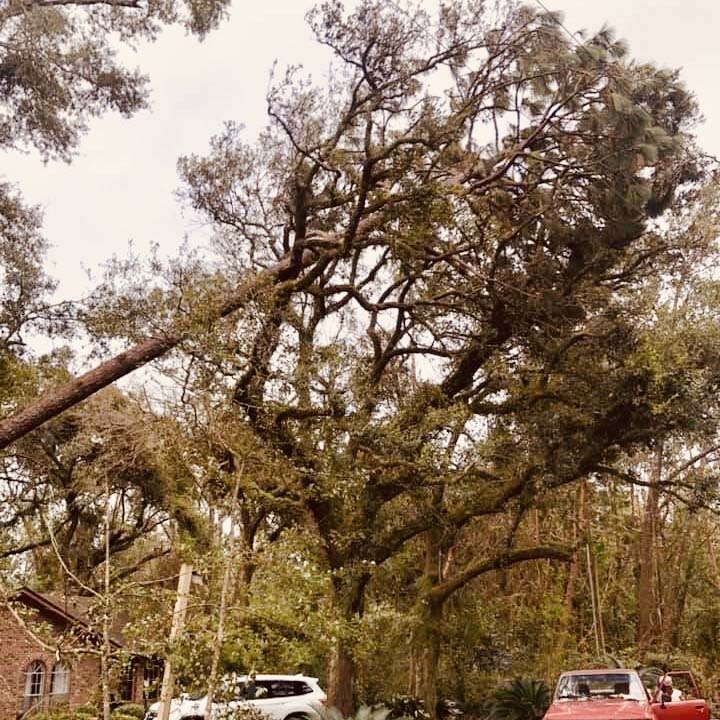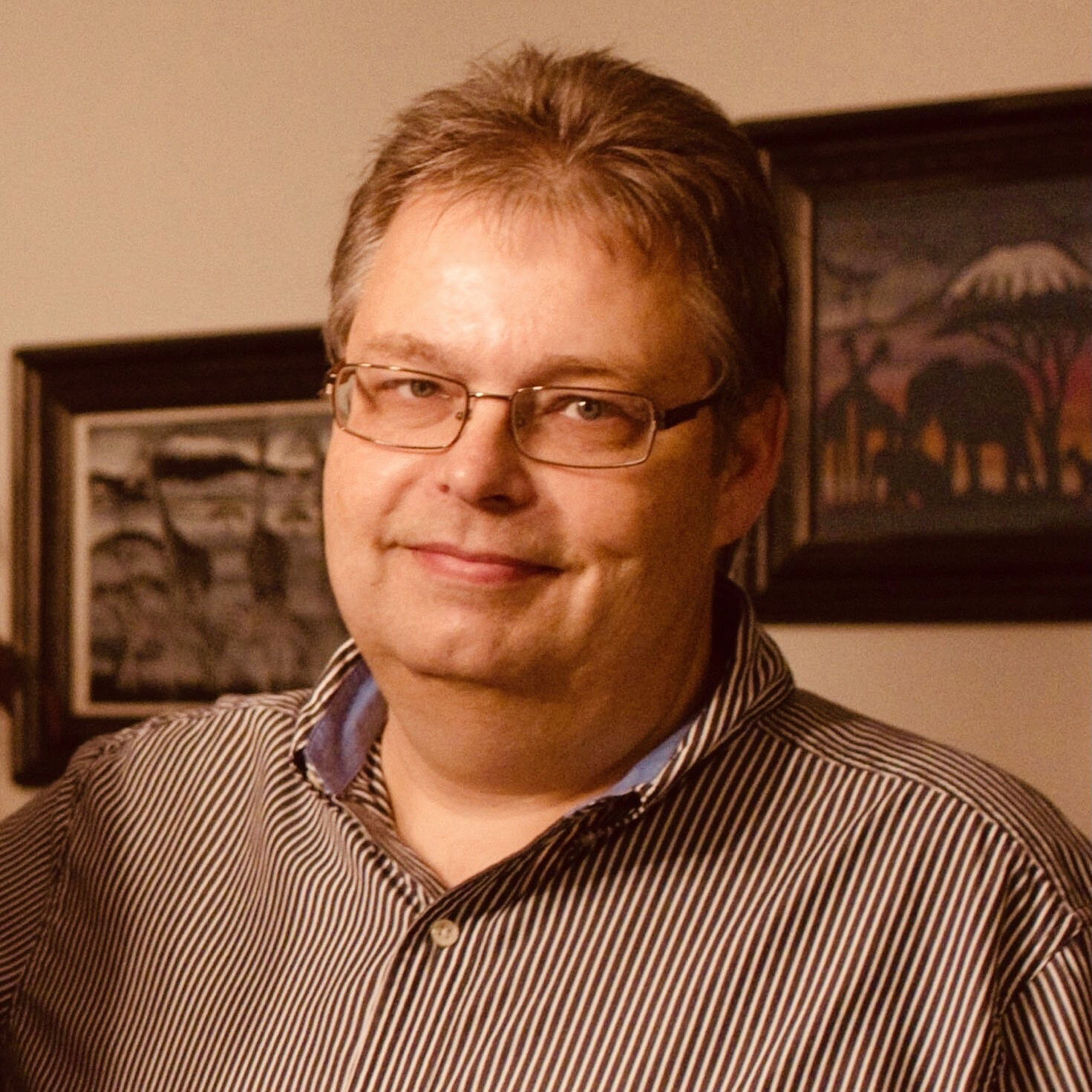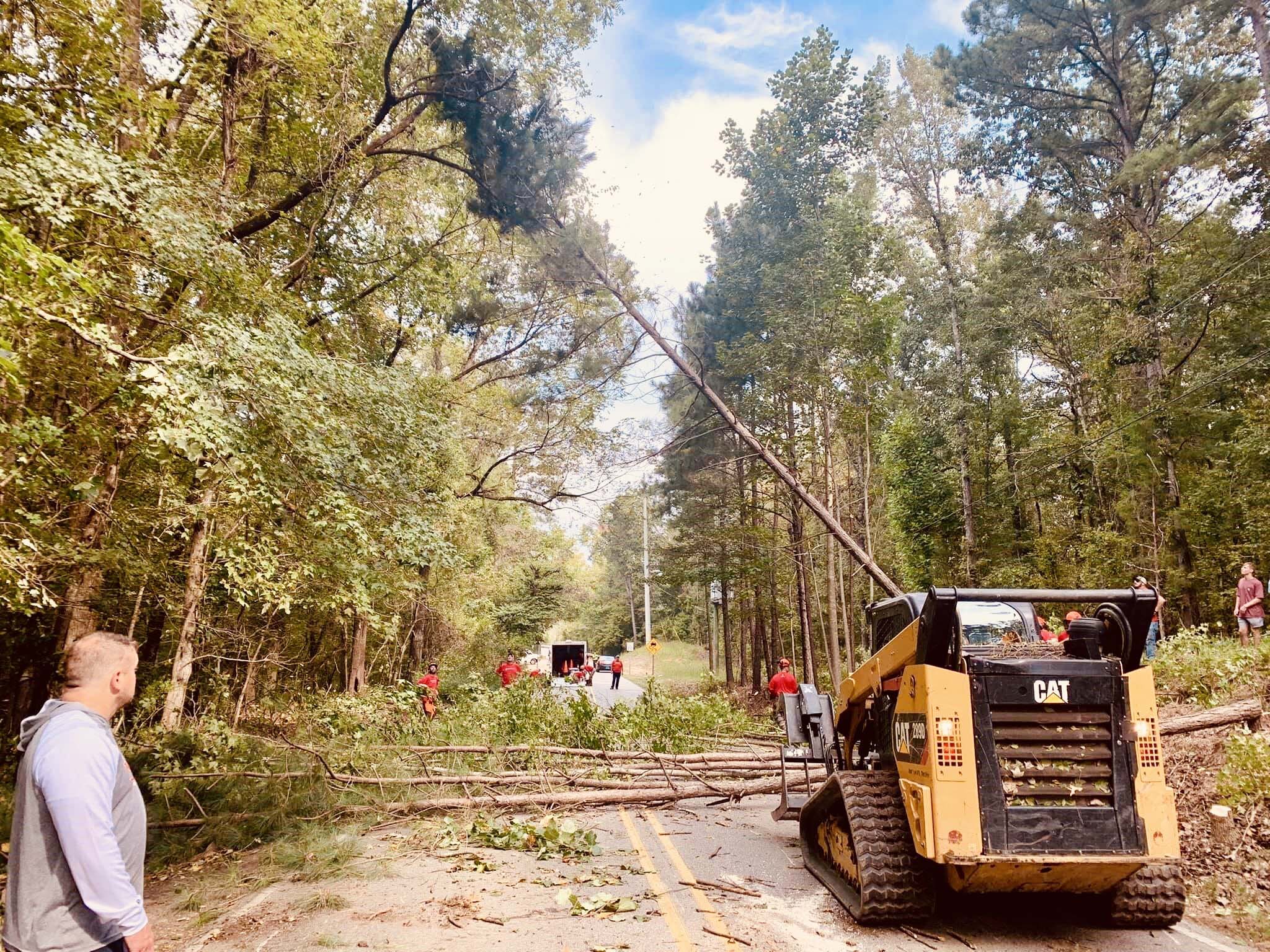 In 2021, we have told several stories of service work from UAB Heersink School of Medicine faculty, staff, and trainees.
In 2021, we have told several stories of service work from UAB Heersink School of Medicine faculty, staff, and trainees.
From creating a fitness and running group for men facing homelessness and breaking barriers to accessing health care to expressing compassion for patients outside hospital walls, it is clear that our medical school is home to some truly remarkable individuals.
As we begin to close out the year, we have one final story to tell—the story of a two-decade long employee who uses his service work to help people and communities during their most traumatic and heartbroken moments.
Helping devastated communities
Meet Kyle Hicks, Information Services Specialist II in the Heersink School of Medicine, who utilizes his skill set in IT work to volunteer on a disaster response team with his church in Birmingham, Ala.
On the disaster response team, Hicks and his group assist people and communities who are directly impacted by disasters and the suffering that may come with it.
“When a natural disaster occurs such as a tornado, hurricane, or flooding, I am usually involved in a response to help those affected. I lead the Administration and Logistics team for the entire Church of Highlands Disaster Response unit,” he says.
Hicks explains that over 300 trained volunteers from across Alabama respond when called. “Usually before a disaster actually happens, I am involved in planning our response, and then within hours of the event happening, I am either there or headed there.”
As soon as he arrives on the scene, his primary job is to begin assessing immediate needs and preparing for the disaster teams to arrive. Their goal is to identify how they can help the community impacted, and get it functioning as quickly as possible.
He says his primary duty on the disaster response team is overseeing and designing the disaster response systems and operations, making them electronic and cloud-based.
 Kyle HicksFinding his calling
Kyle HicksFinding his calling
He began volunteering simply out of interest and curiosity. But after only one volunteer shift, he knew there was more to it. “After my first response to Hurricane Harvey over seven years ago, I felt like it was a calling that God had placed on my life to go and help others at their lowest point when they had nothing.”
After the first response to Hurricane Harvey in November 2017, he has responded to every major hurricane in the southeast, as well as every tornado, major wind event, and flooding in Alabama.
Now, Hicks says that the service work means so much more to him than simply volunteering. When asked what his favorite part of serving is, he says, “Seeing people realize that other people love and care about them, and expect nothing in return.”
“Of all the situations I have been involved in to help, I never leave a location that I am not moved with compassion and want to go back and help even more.”
Hicks has traveled over 4,000 miles in 2021 alone—just for disaster relief work—and has used his personal PTO to do it. He says he has been asked before by others why he does this type of work, especially with the travel time away from family. “I feel very strongly, as I mentioned earlier, that doing this work is something that I am called to do. I try to impact as many people as I possibly can when they need help. This aligns with my personal belief in God and that our purpose to be on this earth is to serve others.”
 He says there is no comparison in fulfillment “to see the expression on someone’s face—who may have just experienced major damage to their home because of downed trees or hurricane winds—when they realize that our team is there to help remove trees or tarp a roof at absolutely no cost, when a job of that magnitude could cost thousands of dollars otherwise.”
He says there is no comparison in fulfillment “to see the expression on someone’s face—who may have just experienced major damage to their home because of downed trees or hurricane winds—when they realize that our team is there to help remove trees or tarp a roof at absolutely no cost, when a job of that magnitude could cost thousands of dollars otherwise.”
“Many people that we have assisted may have suffered a total loss without this help because of the type of insurance they have. In the process, we get to love on them and let them feel that they are cared for in very difficult circumstances.”
The ripple effect of helping others
For Hicks, serving in emergency relief is humbling, and contributes to both personal and professional growth.
“I think it’s easy to become complacent and take for granted just how good I have it compared to someone who may have a huge tree laying on their house. Serving others in a difficult situation reminds me to not take for granted my circumstances, and it pushes me outside my comfort zone to assist others in need. It certainly changes my perspective on things and I’d like to think I am a little better than before every time I am able to help someone through a tough time.”
Professionally, disaster response work involves a huge amount of teamwork. “And, it’s not always in ideal circumstances,” he explains.
Being able to work collaboratively with others from all different backgrounds and skill sets has prompted him to be more empathetic to those in his volunteer unit, which ultimately “carries over to my workplace.”
“Regardless of the task at hand, if we all bring our strongest skills and work collectively, I recognize that we can all be contributors to successfully completing the project or task, and learn from each other in the process.”
Hicks says his boss, John Taylor, recognizes the importance of this disaster aid service work. Hicks says Taylor “is very accommodating to allow me to go on sometimes very short notice.”
“It’s comforting to know I can have this balance of my regular job and my volunteer work which is very important to me. John is very instrumental in my success both in my career at UAB as well as my volunteer efforts.”
Share your story
Like Kyle Hicks, there are many extraordinary staff, faculty, and trainees across the Heersink School of Medicine who go out of their way to help others. We want to tell your story. If you (or a colleague or peer) volunteer and serve, reach out to Mary Ashley Canevaro to be considered for a feature story in 2022.